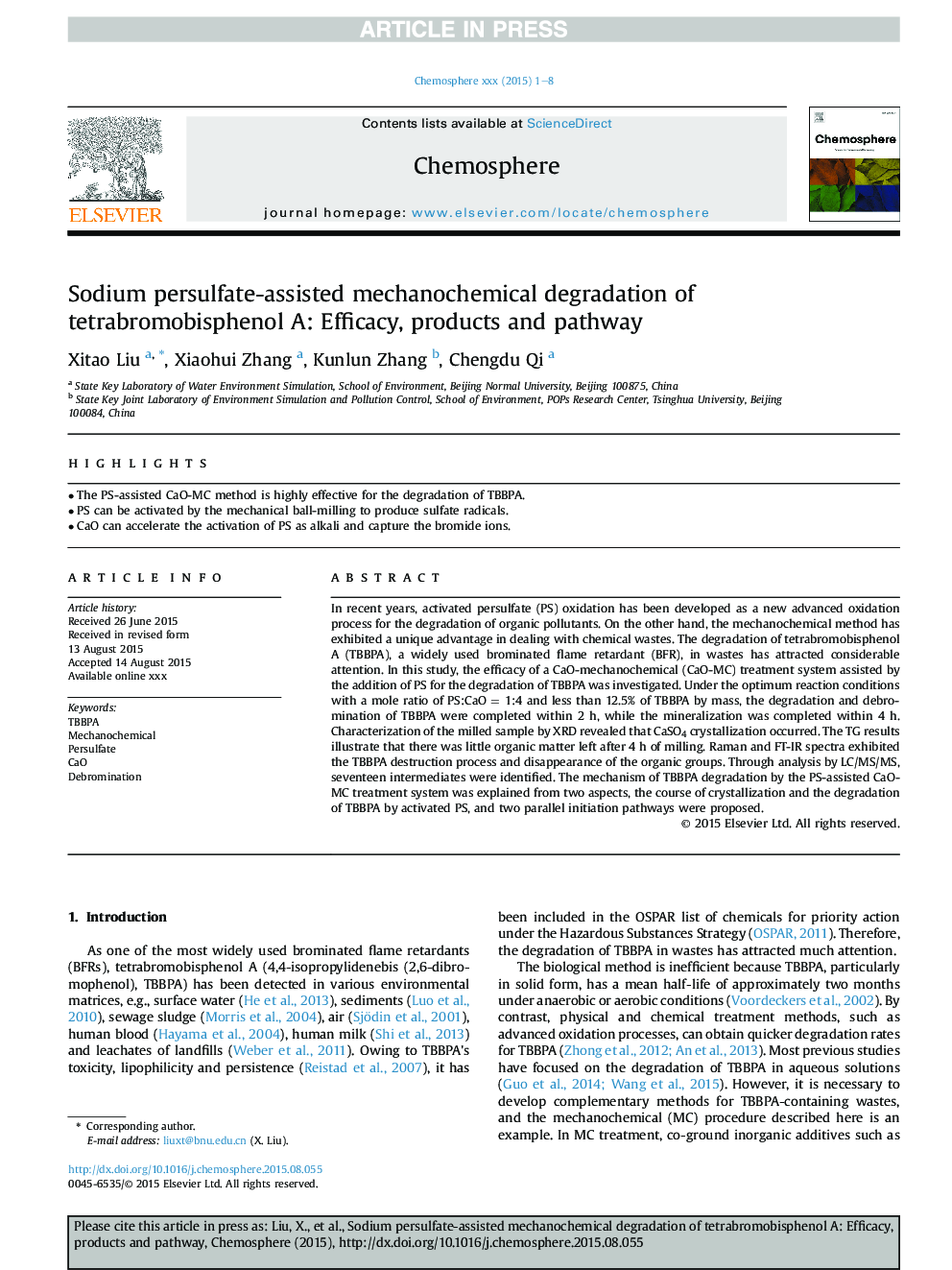| Article ID | Journal | Published Year | Pages | File Type |
|---|---|---|---|---|
| 6306939 | Chemosphere | 2016 | 8 Pages |
Abstract
In recent years, activated persulfate (PS) oxidation has been developed as a new advanced oxidation process for the degradation of organic pollutants. On the other hand, the mechanochemical method has exhibited a unique advantage in dealing with chemical wastes. The degradation of tetrabromobisphenol A (TBBPA), a widely used brominated flame retardant (BFR), in wastes has attracted considerable attention. In this study, the efficacy of a CaO-mechanochemical (CaO-MC) treatment system assisted by the addition of PS for the degradation of TBBPA was investigated. Under the optimum reaction conditions with a mole ratio of PS:CaOÂ =Â 1:4 and less than 12.5% of TBBPA by mass, the degradation and debromination of TBBPA were completed within 2Â h, while the mineralization was completed within 4Â h. Characterization of the milled sample by XRD revealed that CaSO4 crystallization occurred. The TG results illustrate that there was little organic matter left after 4Â h of milling. Raman and FT-IR spectra exhibited the TBBPA destruction process and disappearance of the organic groups. Through analysis by LC/MS/MS, seventeen intermediates were identified. The mechanism of TBBPA degradation by the PS-assisted CaO-MC treatment system was explained from two aspects, the course of crystallization and the degradation of TBBPA by activated PS, and two parallel initiation pathways were proposed.
Related Topics
Life Sciences
Environmental Science
Environmental Chemistry
Authors
Xitao Liu, Xiaohui Zhang, Kunlun Zhang, Chengdu Qi,
